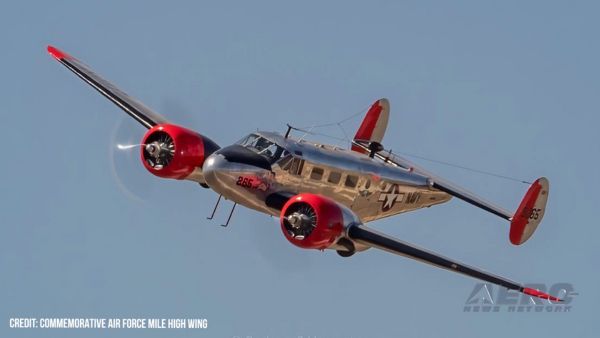(Airplane) Appeared To “Pull Up Steep,” Roll To The Left, And The Left Wing Impacted The Ground
Location: Provo, UT Accident Number: WPR23FA080
Date & Time: January 2, 2023, Local Registration: N555NR
Aircraft: Embraer Executive Aircraft Inc EMB-505 Injuries: 1 Fatal, 2 Serious, 1 Minor
Flight Conducted Under: Part 91: General aviation - Personal

On January 2, 2023, about 1135 mountain standard time, an Embraer EMB-505, N555NR, was substantially damaged when it was involved in an accident at the Provo Municipal Airport, Provo, Utah. The pilot sustained fatal injuries, two passengers sustained serious injuries, and one passenger sustained minor injuries. The airplane was operated as a Title 14 Code of Federal Regulations Part 91 personal flight.
A witness who was removing snow from the ramp area reported that the accident airplane was hangared near his location, and that the airplane remained hangared until 1055. The witness stated that he watched the airplane be refueled and estimated that the pilot started the engines around 1110 or 1115, around the same time light snow began to fall.
The fueler stated the accident airplane was parked in the hangar when he arrived to fuel the aircraft. About 5 minutes later, the pilot pulled the accident airplane out onto the ramp and the fueler repositioned his truck to refuel the airplane with 350 gallons of Jet-A. The fueler stated while he was refueling the airplane, the pilot mentioned that they were trying to get out before the weather. The fueler added that while he refueled the airplane, he did a “once over” and remembered observing unfrozen water droplets on the wings.
After refueling the accident airplane, the fueler returned to the FBO. Upon exiting the fuel truck, he observed the accident airplane taxi past his location. As he walked toward the FBO, he heard the airplane, and turned around to watch it. The fueler stated that the airplane was starting its takeoff roll on runway 13, and appeared to “pull up steep,” roll to the left, and the left wing impacted the ground.
The refueler stated that at the time of the accident, the precipitation was snow and a misty rain, “between” light and medium intensity, along with a light breeze out of the north. Additional witnesses located at the airport observed the accident airplane takeoff, ascend to about 20 to 30 ft above ground level, and then both wings wobbled “back and forth.” The airplane banked right, and then “hard left” as the left wing struck the ground.
Investigators arrived onsite about 23 hours after the accident, and about 4 to 6 inches of fresh snow had fallen, masking impact marks, ground scars, and debris. Examination of the accident site revealed that the airplane impacted the runway surface about 2,626 ft from the approach end of runway 13 and about 20 ft left of the runway centerline. The scrape mark extended about 91 ft and was parallel to the runway centerline.
A second scrape mark was observed about 2,903 ft from the approach end of runway 13, and arced left to the left edge of the runway surface about 3,126 ft from the approach end of the runway. A swath of displaced snow and dirt extended from the runway’s left edge about 100 ft to a large impact crater. The crater contained portions of airframe debris and various airframe components. Wreckage debris extended from the crater about 597 ft to the fuselage. The wings were separated from the airframe and were located about 106 ft beyond the fuselage. Both engines were separated and located adjacent to the fuselage.
The wreckage was recovered to a secure location for further examination.
 Aero-News: Quote of the Day (05.13.25)
Aero-News: Quote of the Day (05.13.25) IAG Orders 76 Boeing, Airbus Airliners
IAG Orders 76 Boeing, Airbus Airliners FAA Shuts Down ATC Oversight Review Amid Scrutiny
FAA Shuts Down ATC Oversight Review Amid Scrutiny Montanas ADS-B Privacy Bill Signed Into Law
Montanas ADS-B Privacy Bill Signed Into Law Newark Falls Victim to More Equipment Outages
Newark Falls Victim to More Equipment Outages



